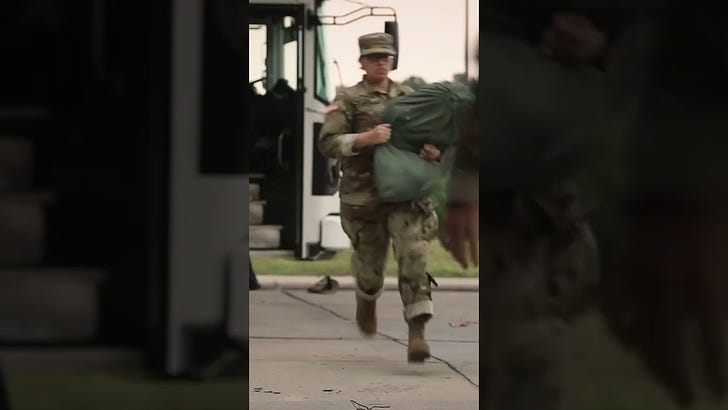There is an exchange on the fictional television show, The West Wing, that reveals something about America’s tradition of citizen soldiers. The President, Jed Bartlet, is talking to his aide Charlie Young, and it goes like this:
President Bartlet: “You think I could take George Washington?”
Charlie Young: “Take him at what, sir?”
President Bartlet: “I don’t know…a war?”
Charlie Young: “Could you take George Washington in a war?”
President Bartlet: “Yeah.”
Charlie Young: “Well, you’d have the Air Force and he’d have the Minutemen, right?”
President Bartlet: “The Minutemen were good.”
Charlie Young: “Still, I think you’d probably take him.”
Setting aside the fact that George Washington regularly lamented the Army’s reliance on militias such as the Minutemen, the dialogue highlights the special place such forces occupy in American history. Immortalized in the public imagination around events such as the Battles of Lexington and Concord, Minutemen, and militias more broadly, evoke a uniquely American idea of citizen soldier that has long influenced American culture, politics, and the relationship between the military and the civilian society it serves. While the realities of militias in America have been—and continue to be—as complex and varied as the history of the nation itself, there are two Army institutions charged with executing on the idea of citizen soldiers: the Army National Guard and the Army Reserve. This week, as the National Guard Association of the United States (NGAUS) wraps up its annual conference in Detroit, Michigan, we take a look at the Army National Guard—the legislation that has defined this institution and the citizens who comprise its units.
Source: Army National Guard.
A Brief History
There is a long and important history of debates about the National Guard, its chain of command, and the types of missions—domestic and foreign—its units can perform. Our focus this week is less on these debates than on the institution itself: what is the Army National Guard and how is it connected to all of American society.
To start, the Army National Guard traces its origins to December 13, 1636, when Massachusetts created three permanent regiments out of the colony’s militia forces. The U.S. Constitution mentions militias in both Articles I and II, however, it was not until 1792 that the new nation passed legislation to create common standards for state militia units and to give clearer authorities for the President to call up and command militias under certain conditions. This created the unique identity which the Army National Guard continues to hold today: it is an institution with both a state and federal role.
In the early 20th century, the Militia Act of 1903 and the National Defense Act of 1916, transformed state militias into a more cohesive institution and gave this network the name, the National Guard. These laws created the foundation for the Army National Guard as it exists today.
Neighbors, Soldiers, Citizens
Today there are approximately 325,000 Americans in the Army National Guard. (Notes: The National Guard also includes the Air National Guard, which has more than 106,000 members, for a total National Guard force that is over 440,000 people. The figures for the Army National Guard do not include the Army Reserve.) The Army National Guard is in all 50 states and has tens of thousands of members mobilized currently in support of operations around the globe. Members of the Army National Guard commit to training one weekend a month and for a two-week period during the year. When not serving with their units, members of the Army National Guard work at civilian jobs and are active members of their local communities. In this sense, they are citizen soldiers in an explicit and meaningful sense.
Source: National Guard.
As a consequence of its distinct dual state and federal mission, the Army National Guard is much more accessible for most Americans relative to the active duty force. I grew up in New Hampshire, for example, where there is no major Army installation; but I knew members of my small hometown who were in the National Guard. Still, as accessible as it is, much more can be done to connect with the Army National Guard.
Ideas for connecting with the Army National Guard
For educators: invite members of your state’s National Guard to come and give a presentation to your school’s students; reach out and ask to do a field trip to the Guard’s offices or training facilities; and when holding career days, feature individuals who hold both a civilian career and serve int eh National Guard.
For museums, historical societies, and other similar institutions: work with your state’s Army National Guard to put on an exhibit or host an event discussing the history of the National Guard; partner with the Army museum closest to your venue to do a joint-event about the Army National Guard; or connect directly with the Army National Guard Public Affairs to bring in speakers or to host an event.
Additional Resources:
For more in formation on the Army National Guard, visit its website here.
Visit the National Guard’s website here.
Learn more about the NGAUS here.
Be Part of Army 250
If you’d like to write a newsletter post, share an educational resource about the Army, or lift up an opportunity for people to connect with the Army (e.g., an event, story, etc.), please contact Dan (dan@army250.us).




